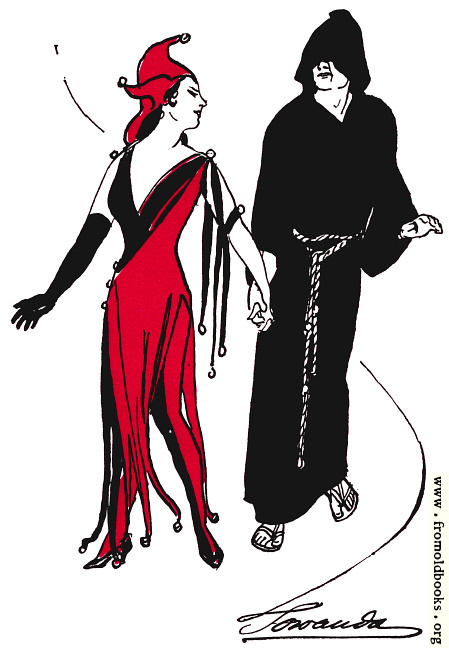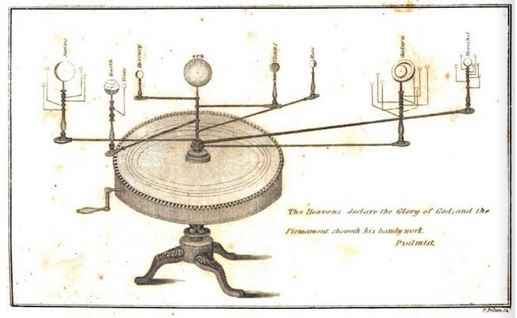I’m Here To Help.

Source: From Old Books
I work in a library. A big part of my job is helping people with problems. Specifically, because I’m not at a desk in the library, I help people with online access issues. Most of the time they can’t get to an online article they need and most of the time, I’m glad to say, it’s just a temporary glitch that’s fixed by the time I get to it and I can download the article and send it to them. Sometimes it’s a little more complicated than that, or a lot more complicated than that, but I still do my best to find what they’re looking for and get it to them.
This is something I take very seriously, but I also really enjoy it. Something I’m not proud of is that I went through three and a half years of college not knowing libraries have something called a Reference Desk where you can go up and ask for help or just ask a question and if the librarian doesn’t know the answer they’ll try and find it. I thought librarians were just there to catalog, reshelve books, and, at the beginning of the school year, show you a film strip about how to use the card catalog. For three and a half years of college I went to the card catalog—back when that was still a thing—to find my own answers, not knowing that guy with the beard who sat at the circular desk near the front could have told me when the Mongols ruled China, and probably even pointed me to some resources my search of the card catalog might have missed. I didn’t know this until the guy with the beard came to one of my classes and gave a really emphatic talk about how it was his job to answer questions and help students find what they needed for their research and how much he loved it.
And not every librarian feels as strongly about this as the guy with the beard did, or as I do. I worked with a librarian who, in his email signature, back when those were a thing people paid attention to, had the line, “If I wanted to help people I wouldn’t have become a cataloger.” So he didn’t want to be a Reference Librarian. That’s okay. Cataloging may be a behind-the-scenes job but, from my perspective, it’s still helping people by organizing books and information in a way that makes it easier to find. But once when I thanked him for doing that he said, “I don’t care.” And in meetings when we’d talk about what was best for the patrons—some people now talk about “library users” but I still like the word “patrons”—he’d say, “I don’t give a shit what the patrons want.” If I’d thought about it I would have said, Then you shouldn’t be in this meeting. Help or get out of the way.
I also worked with a guy who’d sometimes come to my cubicle with a book on something obscure—arcane mathematics or Phoenician grammar. “Who reads this stuff?” he’d say. If I’d thought about it I would have told him hearing about his weekend plans put me to sleep but instead I’d always say, “Someone, hopefully. Otherwise why are we here?” If someone cared enough about something to write a book about it I hoped there’d be people who cared enough to read about it and the library is one place they could do that.
The thing is, though, I work for a private university. I’d like to help everyone but I can’t. Someone from outside the university contacted me because they couldn’t get to something in the library database that they wanted to read. I get these once in a while and I have a stock response about resources are limited to blah blah blah. Most of the time I don’t hear anything else from them—most of the time I don’t hear anything from the people I do help, although the occasional “Thank you!” makes my day—but this guy came back and said he really needed something for research. And it’s not like he was looking for credit card information or how to build a bomb—not information you can get through most libraries anyway, even if you slip that guy with the beard a C-note. All he wanted was some sheet music of work by a contemporary Italian composer.

Source: IMDB
I still feel really bad about this. Unlike doctors who have the Hippocratic Oath and, heck, even lawyers have a code of ethics, there’s no Librarians’ Protocol, other than, “I don’t judge a man by the length of his hair or the kind of music he listens to. Rock was never my bag. But you put on a pair of shoes when you walk into the New York Public Library, fella.” But the sheet music was in a database that the library paid thousands of dollars for, and that came with the agreement that access wouldn’t be shared with just anyone. Whether information should be locked away like that is a Gordian knot and all I’ve got is a rusty butter knife. If I worked in a public library it would be easy—everybody is “the public” so I wouldn’t have to make these distinctions of who’s in and who’s out.
In the end I did what I could: I told him he could contact the publisher and maybe someone there would be able to help, and that he could also check with libraries in his area. Maybe one of them could get it for him.
It wasn’t much but I haven’t heard anything from him since so I hope it helped.

 It feels like summer’s fever has finally broken. The weather is just a little bit cooler, even if only by a few degrees, and this morning when I first stepped outside there was a cool breeze that definitely said, “Winter is coming.” Then it added, “Oh, it’ll be a couple of months at least before you have to turn on the heat or even get out blankets, and right now we’ve got a large low pressure system moving in an easterly direction,” but I went inside before the breeze could pull down a large complicated chart with the names of towns I only hear about when tornadoes hit.
It feels like summer’s fever has finally broken. The weather is just a little bit cooler, even if only by a few degrees, and this morning when I first stepped outside there was a cool breeze that definitely said, “Winter is coming.” Then it added, “Oh, it’ll be a couple of months at least before you have to turn on the heat or even get out blankets, and right now we’ve got a large low pressure system moving in an easterly direction,” but I went inside before the breeze could pull down a large complicated chart with the names of towns I only hear about when tornadoes hit. When I heard
When I heard 
 It’s been hot lately. I know this isn’t news—a lot of people have been living through a heat wave recently and I realize how lucky we are to have air conditioning. It really hit home when our home AC couldn’t keep up and had to take a break. The temperature inside the house started rising to meet the temperature outside and I had Elvis’s “Burning Love” playing on repeat in my head, but it was a 78 and my overheated brain could only manage 33 RPMs so it sounded like it was being sung by a drunk Orson Welles, but that’s another story.
It’s been hot lately. I know this isn’t news—a lot of people have been living through a heat wave recently and I realize how lucky we are to have air conditioning. It really hit home when our home AC couldn’t keep up and had to take a break. The temperature inside the house started rising to meet the temperature outside and I had Elvis’s “Burning Love” playing on repeat in my head, but it was a 78 and my overheated brain could only manage 33 RPMs so it sounded like it was being sung by a drunk Orson Welles, but that’s another story.

 Summer’s more than half over. That’s what I discovered when, for no reason I can explain, I suddenly stopped and asked myself, When exactly is midsummer? And myself replied, Why are you asking me? You’ve been asking yourself this question every summer, usually around this time, since you were eight, but now you’ve got the internet and you can just look up the answer. Although when you were a kid you could have asked an adult. Sure, some of them might not have known, and some would have thought it was funny to give you an answer like “The thirty-eighth of Cunegonde.” And don’t you feel stupid for not finding out you could ask questions like this at the reference desk in the library until your senior year of college so you spent a lot of time trying to find information on your own?
Summer’s more than half over. That’s what I discovered when, for no reason I can explain, I suddenly stopped and asked myself, When exactly is midsummer? And myself replied, Why are you asking me? You’ve been asking yourself this question every summer, usually around this time, since you were eight, but now you’ve got the internet and you can just look up the answer. Although when you were a kid you could have asked an adult. Sure, some of them might not have known, and some would have thought it was funny to give you an answer like “The thirty-eighth of Cunegonde.” And don’t you feel stupid for not finding out you could ask questions like this at the reference desk in the library until your senior year of college so you spent a lot of time trying to find information on your own? There was an unexpected passenger in the car. I know a thing or two about spiders and even I was surprised to see the large orb web spun over the passenger seat, not to mention the large Aranea cavatica in the middle of the web, and if you know anything about spiders you know that’s the same species that was the hero of a famous children’s book. Some people think the pig is the hero of the book but let’s be clear: there’s a reason it’s called Charlotte’s Web and not Wilbur’s Mudhole.
There was an unexpected passenger in the car. I know a thing or two about spiders and even I was surprised to see the large orb web spun over the passenger seat, not to mention the large Aranea cavatica in the middle of the web, and if you know anything about spiders you know that’s the same species that was the hero of a famous children’s book. Some people think the pig is the hero of the book but let’s be clear: there’s a reason it’s called Charlotte’s Web and not Wilbur’s Mudhole.